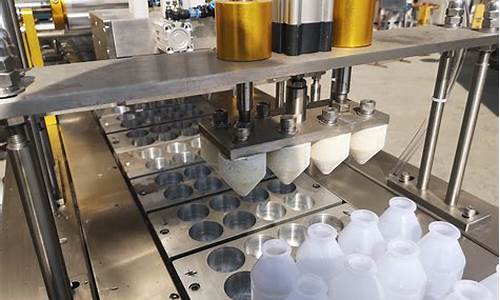In the rapidly evolving beverage industry, efficient and high-quality packaging is crucial for maintaining product integrity and extending shelf life. Milk and juice filling equipment plays a pivotal role in this process, ensuring that products are filled accurately, sealed tightly, and packaged efficiently. This article provides an in-depth look at the various aspects of milk and juice filling machines, highlighting their importance, functionality, and the benefits they offer.

Types of Filling Equipment
Milk and juice filling equipment comes in several types, each designed to handle specific needs and preferences in the beverage industry. The most common types include:
1. Volumetric Fillers: These machines use precise volumetric measurements to ensure consistent fill levels. They are ideal for beverages that require exact quantities per bottle, such as milk and fruit juices. The volumetric filling process involves measuring a set volume of liquid and then dispensing it into the containers.
2. Gravity Fillers: Gravity filling machines rely on gravity to move the liquid into the bottles. They are suitable for thin and non-viscous liquids, such as juice, where the flow rate is less critical. Gravity fillers are often used in high-speed production lines due to their simplicity and efficiency.
3. Piston Fillers: Piston filling machines are designed for thicker liquids and those with particulates, like milk with additives or juices containing pulp. They work by using a piston to draw liquid from a reservoir and then push it into the bottles. This method ensures accurate filling even with thicker liquids.
4. Pressure Fillers: Pressure filling equipment uses pressurized tanks to push liquid into the bottles. This method is effective for both thin and moderately thick liquids and is often used in industries where speed and precision are crucial.
Key Features of Modern Filling Machines
Modern milk and juice filling equipment boasts several advanced features that enhance their efficiency and effectiveness. These features include:
1. Automation: Most contemporary filling machines are equipped with automated systems that reduce the need for manual intervention. Automation not only speeds up the filling process but also minimizes errors and improves consistency in filling levels.
2. Hygiene and Cleanability: Hygiene is paramount in the beverage industry. Advanced filling machines are designed with easy-to-clean components and materials that are resistant to contamination. Some machines even feature automated cleaning systems that ensure thorough sanitization between production runs.
3. Adjustable Settings: Modern equipment allows for easy adjustment of fill volumes, speeds, and other parameters. This flexibility is essential for handling different bottle sizes, liquid types, and production volumes.
4. Energy Efficiency: Energy consumption is a significant concern in large-scale production. Many newer filling machines are designed with energy-efficient technologies that reduce power usage without compromising performance.
Benefits of Investing in High-Quality Filling Equipment
Investing in high-quality milk and juice filling equipment offers several benefits for beverage manufacturers:
1. Enhanced Product Quality: Accurate filling and proper sealing are crucial for maintaining the quality and safety of milk and juice products. High-quality filling machines ensure that each bottle is filled to the correct level and sealed properly, reducing the risk of spoilage and contamination.
2. Increased Efficiency: Advanced filling machines are designed to operate at high speeds while maintaining precision. This increased efficiency translates into higher production rates and lower labor costs, making it a valuable investment for large-scale operations.
3. Cost Savings: Although high-quality filling equipment may require a larger initial investment, the long-term cost savings are substantial. Improved efficiency, reduced waste, and lower maintenance costs contribute to overall savings over time.
4. Flexibility: Modern filling machines are versatile and can handle a variety of liquid types and bottle sizes. This flexibility allows manufacturers to adapt to changing market demands and expand their product lines without needing new equipment.
In conclusion, milk and juice filling equipment is a vital component of the beverage production process. The right equipment not only ensures the accuracy and quality of the products but also enhances overall efficiency and reduces operational costs. By investing in advanced filling technology, manufacturers can improve their production capabilities and better meet the demands of the market.






























